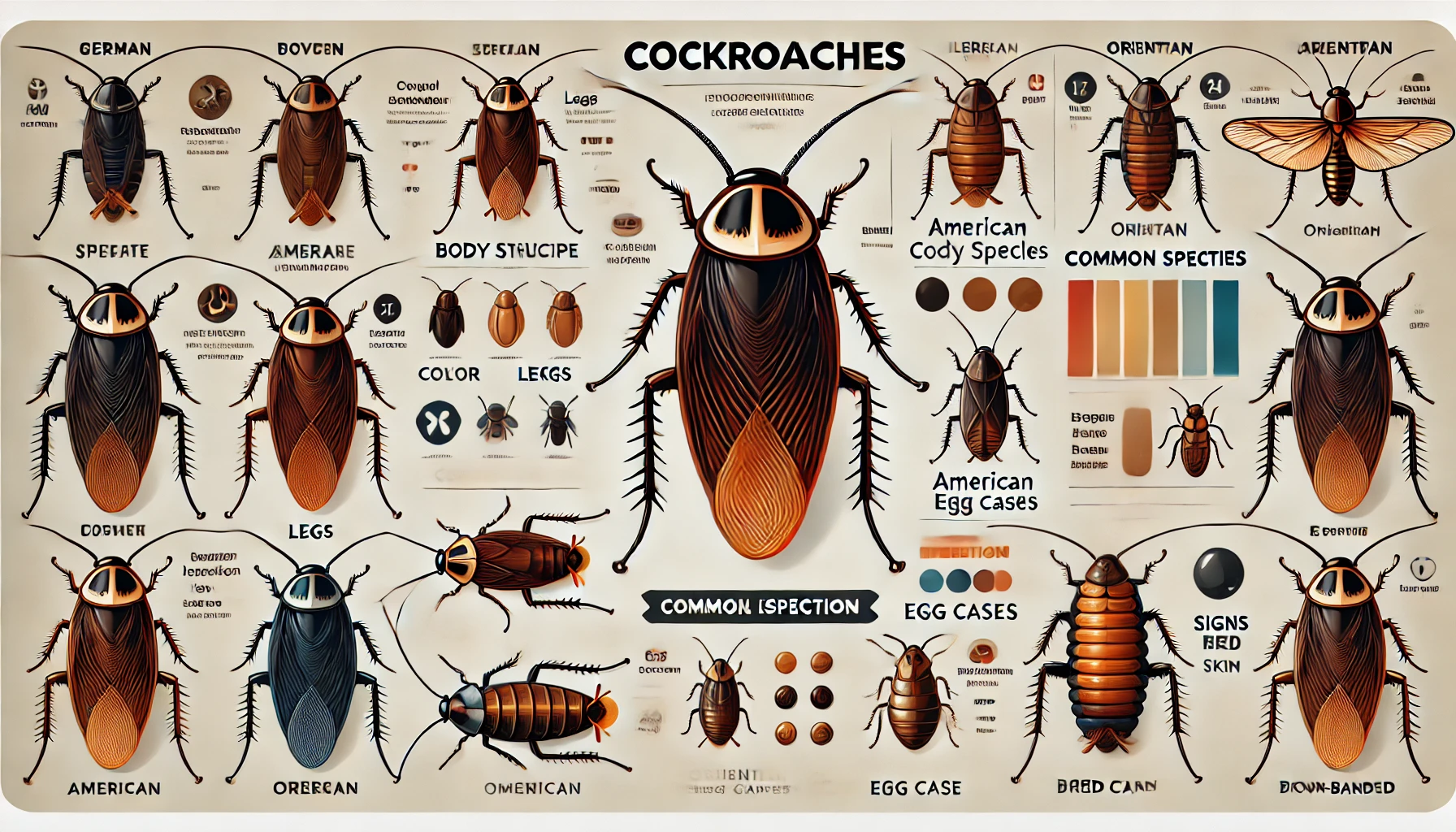What Does a Cockroach Look Like? Understanding the Anatomy and Characteristics of Cockroaches
Cockroaches are some of the most resilient and adaptable insects on the planet. They have inhabited the Earth for millions of years, and their distinctive appearance has allowed them to thrive in various environments. Understanding what a cockroach looks like can help in identifying these pests, which is crucial for effective pest control and prevention. This post will explore the physical characteristics, types, and common behaviors of cockroaches.
1. Physical Characteristics of Cockroaches
Cockroaches are easily recognizable due to their unique physical features. Here’s a breakdown of their anatomy:
Body Structure
- Shape: Cockroaches have a flat, oval-shaped body that allows them to navigate tight spaces. Their body is divided into three main parts: the head, thorax, and abdomen.
- Size: Depending on the species, cockroaches can vary significantly in size. Most common household cockroaches, such as the German cockroach, range from about 1 to 2 inches in length, while larger species, like the American cockroach, can grow up to 4 inches.
Color
- Color Variations: Cockroaches can be brown, reddish-brown, or black, with variations depending on the species. The German cockroach is typically light brown with two dark stripes running down its back, while the American cockroach is a reddish-brown color with a yellowish border around its pronotum (the area behind the head).
Wings
- Wings: Most adult cockroaches have wings. The wings are membranous and extend past the abdomen. While some species can fly short distances, others are primarily ground-dwelling. Cockroaches often use their wings to glide or flutter when threatened.
Antennae
- Long Antennae: Cockroaches have long, slender antennae that can be longer than their bodies. These antennae are highly sensitive and help them navigate their environment, detect food, and sense changes in their surroundings.
Legs
- Six Legs: Cockroaches have six long legs that allow them to move quickly. Their legs are equipped with spines, aiding in grip and maneuverability, which is essential for climbing surfaces and running from predators.
2. Common Species of Cockroaches
There are several species of cockroaches, each with unique characteristics. Here are some of the most common ones:
1. German Cockroach (Blattella germanica)
- Description: Light brown with two dark stripes on its back. They are about 1.5 to 2 inches long.
- Habitat: Commonly found in kitchens and bathrooms, they prefer warm, humid environments.
2. American Cockroach (Periplaneta americana)
- Description: Reddish-brown with a yellow margin around the pronotum. They can grow up to 4 inches long.
- Habitat: Often found in basements, sewers, and large commercial buildings.
3. Oriental Cockroach (Blatta orientalis)
- Description: Dark brown to black with a glossy appearance, typically about 1 to 1.5 inches long.
- Habitat: Prefers cooler, damp areas such as basements and crawl spaces.
4. Brown-Banded Cockroach (Supella longipalpa)
- Description: Light brown with two distinct bands across the wings. They are smaller, typically around 1 inch long.
- Habitat: Often found in warmer areas of a home, such as bedrooms and living rooms.
3. Behavior and Habitat
Adaptability
Cockroaches are highly adaptable insects. They can survive in various environments, including urban settings, forests, and fields. They thrive in warm, humid conditions and often seek shelter in homes, especially where food and moisture are readily available.
Diet
Cockroaches are omnivorous scavengers, feeding on a wide range of organic materials. They are particularly attracted to starches, sugars, and greasy substances. Their ability to eat nearly anything contributes to their survival in diverse environments.
Reproduction
Cockroaches reproduce quickly, which can lead to infestations. A female cockroach can produce several egg cases (oothecae) during her lifetime, each containing numerous eggs. The most common species, such as the German cockroach, can produce up to 30 to 40 eggs per case.
Nocturnal Behavior
Cockroaches are primarily nocturnal, meaning they are most active at night. They prefer to hide during the day in cracks, crevices, and other dark areas, making them difficult to spot.
4. Health Concerns
While cockroaches are not known to transmit diseases directly, they can carry allergens and pathogens that may cause health issues in humans. Their droppings, saliva, and shed skin can trigger allergic reactions and asthma attacks, particularly in sensitive individuals.
Allergies and Asthma
Research has shown that cockroach allergens are a significant contributor to asthma and allergic symptoms, especially in urban environments. Proper pest control measures are essential to reduce exposure and maintain a healthy living environment.
5. Identifying Cockroach Infestations
Recognizing the signs of a cockroach infestation is crucial for prompt action. Here are common indicators:
- Droppings: Small, dark droppings resembling coffee grounds or black pepper may be found in areas where cockroaches are active.
- Egg Cases: Finding oothecae (egg cases) is a clear sign of an infestation. These are typically brown and oval-shaped.
- Shed Skin: Cockroaches molt several times, leaving behind shed skins that can be found in hiding spots.
- Unusual Odors: A musty or oily odor can indicate a significant cockroach presence.
6. Prevention and Control
Preventing cockroach infestations involves maintaining cleanliness and reducing potential habitats:
- Keep a Clean Home: Regularly clean surfaces, eliminate food crumbs, and properly store food in sealed containers.
- Seal Entry Points: Close off cracks and crevices in walls, windows, and doors to prevent entry.
- Eliminate Moisture: Fix leaks and reduce humidity levels, as cockroaches thrive in damp environments.
- Regular Inspections: Check for signs of infestation and address any issues promptly.
Professional Pest Control
If you suspect a cockroach infestation, consider contacting a professional pest control service. They can assess the situation, implement effective treatment strategies, and provide recommendations for prevention.
Conclusion
Cockroaches are fascinating yet often unwelcome inhabitants of our environments. Understanding what they look like, their behavior, and the signs of infestation is crucial for effective prevention and control. By maintaining cleanliness and being vigilant, you can minimize the risk of encountering these resilient pests in your home.






